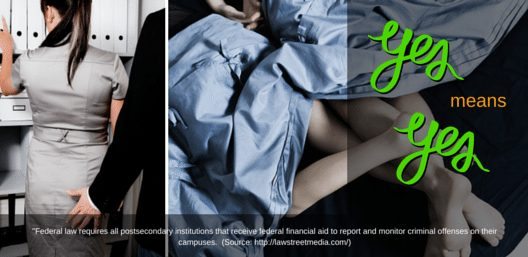Published by The Washington Post on September 21, 2015, an article unraveled “the results of a survey that asked students at 27 universities about their experiences with sexual assault and sexual misconduct, drawing responses from more than 150,000 students.” You may take a look at our post “A survey on sexual assault and misconduct at 27 universities unraveled” for further data.
According to the U.S. Department of Education’s study, “The number of reported forcible sex crimes on campus reported increased by 52 percent, from 2,200 in 2001 to 3,300 in 2011.”
Now, many top U.S. colleges and universities are under investigation for rapes or sexual assaults. Please refer to a Huff Post’s article “124 Colleges, 40 School Districts Under Investigation For Handling of Sexual Assault.”
In December 2014, U.S. Department of Justice also had a special report titled “Rape and Sexual Assault Victimization Among College – Aged Females, 1995-2013.” This report indicates that “for the period 1995-2013, females ages 18 to 24 had the highest rate of rape and sexual assault victimizations compared to females in all other age groups.”
As of today, California and New York both have enacted “Yes Means Yes” law to stop rape and sexual assault on campus. Even though many judges and lawmakers think that “Yes Means Yes” Law has its faults and will create more problems than it solves, most people think it could reduce the epidemic rapes on campus.
What will happen after “Yes Means Yes” law? An article of Los Angeles Times pointed out “California universities that receive public funding must now require students to get affirmative consent before engaging in sexual activity.”
Will “Yes Means Yes” Law help at all? Let’s wait and see. Time will provide us the best answer.

